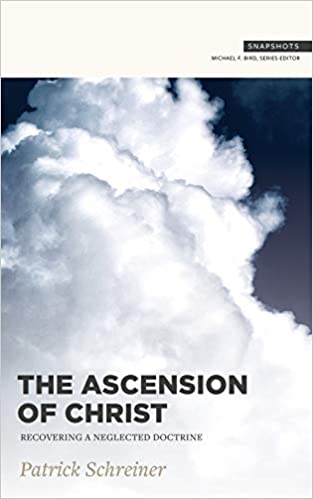A Brief Book Summary from Books At a Glance
by Steve West
Table of Contents
1 Overlooking the Ascension
2 Ascension of the Prophet
3 Ascension of the Priest
4 Ascension of the King
5 The Ascension in Theology
Summary
Chapter 1: Overlooking the Ascension
It is too often the case that when believers tell the gospel, they miss the importance of the ascension. We tend to focus on what Christ has done in the past (his life, death, and resurrection), and on what he will do in the future (coming back in glory), but we neglect what he is doing now. There are five reasons why the ascension is often neglected in Christian circles today:
- Scripture very rarely speaks of it. Its only narrative-form description is at the end of Luke’s Gospel and the beginning of Acts.
- It seems like a bad plan (i.e., being with Jesus seems obviously much better than having him away from us). Seeing Jesus and having him physically present would seem to provide much more comfort and make Christianity much easier to accept.
- The implications of the ascension seem unclear. The narrative accounts do not provide theological explanation, and we have to piece together the reasons for it.
- Knowing what we know about space and the universe, the event is abnormal and raises questions about precisely where Jesus has gone.
- Whereas the NT writers thought of the resurrection-ascension as a package, we tend to stop after the resurrection without tracking it through to the climax of Christ’s session in heaven.
There are also five crucial reasons why we must not neglect the ascension:
- Although the Greek word for “ascent” is not found in the NT, and the ascension receives very few verses of narrative description, there are numerous verses that describe the reality using terms like “go up,” “go away,” “go into,” “taken up,” “exalted,” and more. The concept of Christ’s exaltation and triumph is pervasive in Scripture. John’s Gospel records many sayings of Jesus that point to his upcoming return to glory. Jesus is Lord because he is reigning over all things, and his place on the throne of heaven with the Father is a substantial part of NT teaching.
- The ascension is prominent in the sermons and speeches in Acts. Peter’s sermon on Pentecost sets the themes for the rest of the sermons in Acts (which are summaries of the gospel’s main points), and his Pentecost sermon has a strong emphasis on Christ’s ascension and rule.
- The ascension is a key hinge in God’s redemptive plan. The narrative description at the end of Luke and the beginning of Acts shows that it is essential for transitioning into the new covenant age. “Christ’s ascension and session therefore became the hinge on which the New Testament turns.” The gospel message is tied to Christ’s rule and reign over all things, and it is because he reigns in heaven that the church can advance on earth. It is also because of his reign that the Spirit is poured out.
- Although the ascension is often neglected today, it has been a vital part of the church’s historical creeds and confessions. The early church saw Christ’s ascension as the indispensable note of triumph.
- The ascension is Trinitarian: Christ the Son returns to the Father and the Spirit is poured out. All of life is lived out under the reign of Christ in heaven, and nothing could be more practical for the church. . . .
The remainder of this article is premium content. Become a member to continue reading.
Already have an account? Sign In
